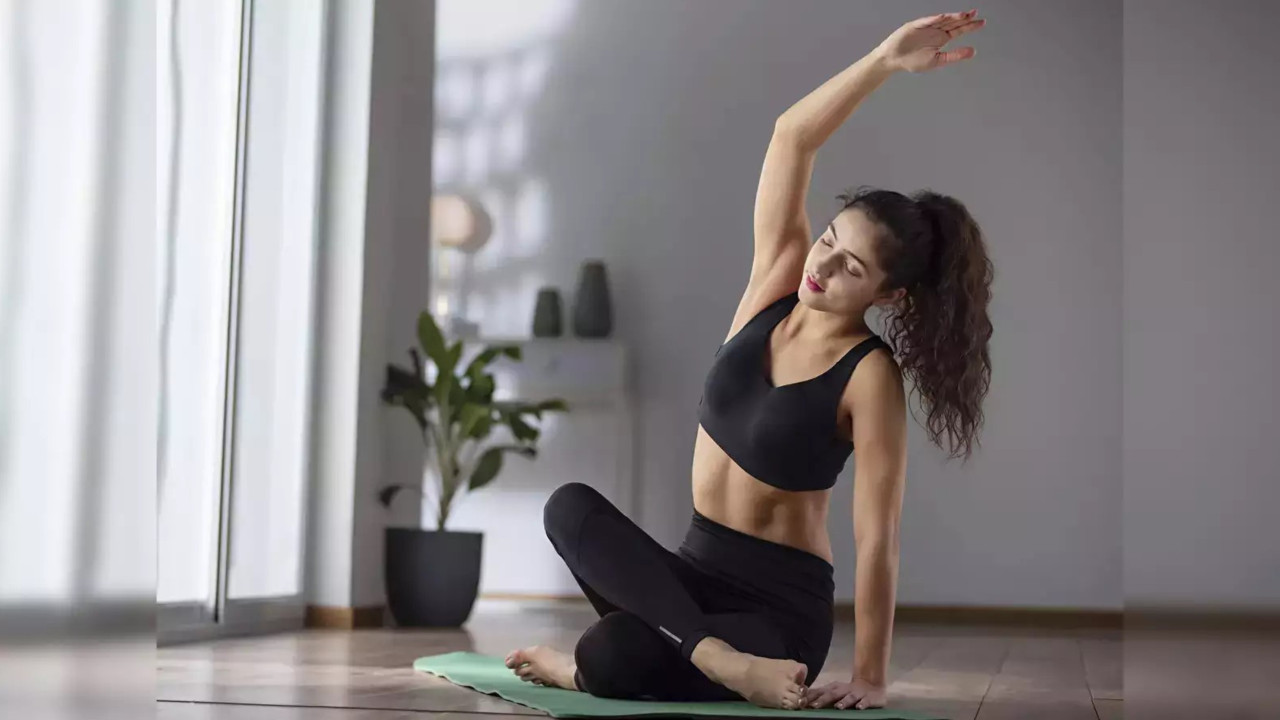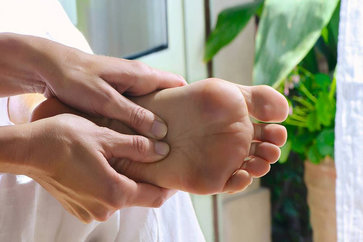7 Easy Yoga Poses for Improved Blood Circulation
Poor blood circulation is not a standalone ailment but is often a symptom of underlying health issues. It can indicate more significant problems that may require careful evaluation and management. Addressing these root causes is essential for effective treatment rather than merely managing symptoms. 
By identifying and treating the underlying conditions—such as heart disease, diabetes, or obesity—you can significantly improve blood flow and overall cardiovascular health. Furthermore, enhancing circulation can lead to better oxygenation of tissues, which is crucial for optimal organ function.
Improving blood circulation often leads to increased energy levels and enhanced physical performance. Additionally, it can contribute to better wound healing, allowing the body to recover more effectively.
By addressing the root causes of poor circulation, individuals can cultivate a healthier lifestyle and lower the risk of complications. Empowering yourself with knowledge about circulation is a crucial first step toward proactive health management and overall well-being.
Common Causes of Poor Circulation
Several conditions can contribute to poor circulation, including:
- Obesity: Excess weight puts strain on the cardiovascular system, making it harder for the heart to pump blood efficiently. This can lead to higher blood pressure and increased risk of heart disease, creating a cycle that further impairs circulation.
- Diabetes: High blood sugar levels can damage blood vessels over time, leading to a condition known as peripheral artery disease. This damage narrows the arteries, restricting blood flow and making it difficult for the body to deliver oxygen and nutrients to tissues.
- Heart Conditions: Issues such as heart disease, arrhythmias, or heart failure can directly affect the heart’s ability to circulate blood effectively. When the heart struggles to pump blood, it can result in decreased oxygenation of vital organs and tissues.
- Arterial Issues: Conditions like atherosclerosis, where arteries become narrowed by plaque buildup, can significantly impede circulation. Poor diet, lack of exercise, and smoking can accelerate this process, leading to serious cardiovascular complications.
Lifestyle factors also play a crucial role. Sedentary habits, combined with a high intake of sugars and unhealthy fats, can exacerbate these conditions, leading to decreased blood flow throughout the body. Making healthier lifestyle choices is vital for preventing and managing poor circulation.
Physical Signs of Poor Circulation
Recognizing the signs of poor blood circulation is vital. Common symptoms include:
- Cold Sensations: Feeling unusually cold in the extremities, such as hands and feet, can indicate insufficient blood flow. This can be particularly noticeable in colder environments or after sitting still for long periods.
- Tingling and Numbness: A tingling or numb sensation in the limbs may suggest nerve involvement due to poor circulation. These sensations can also be accompanied by a feeling of weakness or heaviness in the affected areas.
- Varicose Veins: The appearance of swollen, twisted veins in the legs is a clear indicator of circulation issues. Varicose veins can also cause discomfort, aching, and fatigue in the legs, especially after prolonged standing.
- Swelling: Persistent swelling in the feet and hands can signal fluid retention related to circulation problems. This swelling, known as edema, can lead to discomfort and may indicate that the heart is not effectively pumping blood.
- Slow Healing: Wounds or injuries that take longer to heal may point to reduced blood flow and nutrient delivery to tissues. This slow healing process can increase the risk of infections and complications.
- Fatigue: A general feeling of exhaustion or weakness can be linked to inadequate blood supply to the body’s muscles and organs. This fatigue can interfere with daily activities and decrease overall vitality.
Serious Symptoms to Watch For
Two particularly concerning symptoms of poor blood circulation are:
- Ulcers: The development of ulcers on the legs and feet can indicate severe circulation problems and require immediate medical attention. These ulcers can be painful and may become infected if not treated promptly.
- Cyanosis: Mild cyanosis, characterized by a bluish tint in the fingertips or lips, is a serious sign of insufficient oxygenated blood reaching these areas. This condition may signify critical issues with heart function or severe arterial blockages, necessitating urgent medical evaluation.
Recognizing these symptoms early can help prompt timely medical intervention, addressing the underlying causes of poor circulation and promoting better overall health. Taking proactive steps can significantly improve your quality of life and prevent more severe health complications.
Diet To Improve Blood Circulation
To naturally enhance blood circulation, adopting a healthy diet is key. Here are some essential foods and habits to consider:
1. Include Fatty Fish: Incorporate fish like tuna, salmon, and sardines into your meals. These are rich in omega-3 fatty acids, which help reduce blood vessel inflammation and improve blood flow. Omega-3s can also lower triglyceride levels, reducing the risk of clots and enhancing overall heart health. Aim for at least two servings of fatty fish per week to reap these benefits.
2. Increase Fruits and Vegetables: A variety of fruits and vegetables can significantly benefit circulation. Focus on:
- Citrus Fruits: Oranges, lemons, and grapefruits are high in vitamin C, which reduces inflammation and supports vascular health. Vitamin C also helps strengthen blood vessels and enhances the absorption of iron, further improving circulation.
- Watermelon: This hydrating fruit contains lycopene, an antioxidant known to enhance blood circulation. Additionally, watermelon has a high water content, which helps maintain hydration and promote better blood flow. Enjoy it as a refreshing snack or blend it into smoothies.
3. Limit Red Meat: Reducing your intake of red meat can improve overall cardiovascular health, making room for healthier protein sources. Processed meats, in particular, can contribute to arterial plaque buildup. Consider substituting red meat with lean proteins like chicken, turkey, beans, or legumes, which offer heart-healthy benefits without saturated fats.
4. Stay Hydrated: Proper hydration is essential for maintaining good circulation, so drink plenty of water throughout the day. Dehydration can lead to thicker blood, making it harder for your heart to pump effectively. Aim for at least 8 glasses of water daily, and consider incorporating hydrating foods like cucumbers, oranges, and celery into your diet.
5. Incorporate Regular Exercise: Engaging in moderate exercise or yoga can greatly enhance circulation. Physical activity stimulates blood flow and encourages the heart to pump more efficiently. Aim for at least 150 minutes of moderate aerobic activity each week, along with strength training exercises. Even simple activities like walking or cycling can make a significant difference.
By making these dietary adjustments and lifestyle changes, you can support your circulatory health naturally and improve your overall well-being.
Yoga Postures to Improve Blood Circulation
Good blood circulation is essential for maintaining optimal health. Yoga, with its combination of stretches, breathing exercises, and poses, can help stimulate blood flow, oxygenate the body, and support overall circulation. Here are some effective yoga postures to improve blood circulation:
1. Tadasana (Mountain Pose)
Tadasana is a simple standing pose that helps in improving posture and grounding. It encourages blood circulation by stretching the entire body, allowing blood to flow freely.
- How to perform: Stand tall with your feet together, and arms by your sides. Engage your core, stretch your arms upwards, and lift your heels slightly off the ground. Hold the pose while breathing deeply.
2. Adho Mukha Svanasana (Downward-Facing Dog)
This pose promotes blood flow to the brain and upper body, helping to rejuvenate the system and improve circulation.
- How to perform: Start on your hands and knees. Lift your hips up, straightening your legs and forming an inverted V-shape with your body. Keep your hands firmly on the ground and hold the position while breathing deeply.
3. Viparita Karani (Legs Up the Wall Pose)
This relaxing pose is excellent for improving circulation in the legs and reducing swelling. It allows blood to flow back toward the heart, promoting relaxation and circulation.
- How to perform: Lie down on your back near a wall, and extend your legs upwards, resting them against the wall. Keep your arms at your sides and relax in this position for several minutes.
4. Sarvangasana (Shoulder Stand)
Sarvangasana stimulates the thyroid gland and improves circulation throughout the body, especially in the upper regions.
- How to perform: Lie on your back, lift your legs, and support your lower back with your hands as you raise your legs vertically. Hold this position while keeping your body aligned and breathing deeply.
5. Uttanasana (Standing Forward Bend)
Uttanasana helps to boost blood flow to the head and upper body, enhancing circulation while relieving tension in the spine.
- How to perform: Stand tall, then slowly bend forward from the hips, bringing your head toward your knees. Allow your arms to hang down or grasp the back of your ankles. Hold the pose for several breaths.
6. Vrikshasana (Tree Pose)
This balancing pose helps improve circulation by enhancing stability and strengthening the legs.
- How to perform: Stand tall, then place the sole of your right foot on the inner thigh of your left leg. Bring your hands together in a prayer position in front of your chest. Hold the pose and repeat with the other leg.
7. Savasana (Corpse Pose)
Savasana allows the body to fully relax and promotes healthy circulation. This pose is ideal after an active yoga session to help the body settle and integrate the benefits.
- How to perform: Lie flat on your back with your legs and arms extended. Close your eyes and focus on deep breathing, allowing your body to relax completely.
10 Benefits of Yoga for Blood Circulation
1. Increased Oxygen Supply: Yoga enhances blood oxygenation through controlled breathing techniques, improving lung capacity. This ensures that essential oxygen is efficiently delivered to organs and tissues, vital for optimal cellular function and overall health.
2. Reduced Blood Pressure: Regular yoga practice helps regulate blood pressure by promoting relaxation and lowering cortisol levels. This supports cardiovascular health and reduces the risk of hypertension, contributing to a healthier heart and improved circulation.
3. Enhanced Lymphatic Flow: Many yoga postures stimulate the lymphatic system, promoting detoxification. This improved lymphatic flow helps the body efficiently remove waste and toxins, boosting immunity and enhancing overall well-being through a cleaner internal environment.
4. Stress Reduction: Yoga significantly lowers stress levels through physical postures, deep breathing, and meditation. By reducing stress, yoga alleviates strain on the cardiovascular system, promoting healthier blood flow and improving heart function.
5. Improved Flexibility and Posture: Practicing yoga enhances flexibility and promotes better posture, which positively impacts circulation. Improved alignment reduces the risk of vascular constriction, allowing for more efficient blood flow throughout the body during daily activities.
6. Strengthened Heart Health: Dynamic yoga styles, such as Vinyasa, elevate heart rate, strengthening the heart muscle. A stronger heart promotes better blood circulation, ensuring that all body systems receive the necessary nutrients and oxygen for optimal function.
7. Boosted Energy Levels: Enhanced circulation from yoga practice leads to higher energy levels and reduced fatigue. Efficient delivery of oxygen and nutrients to cells results in increased vitality, making it easier to engage in physical activities.
8. Enhanced Mind-Body Connection: Yoga fosters a strong mind-body connection, encouraging awareness of physical sensations and health. This heightened awareness helps individuals identify potential circulation issues early, allowing for proactive health management and timely interventions.
9. Better Muscle Tone: Regular yoga practice improves muscle tone, which supports circulation by promoting efficient blood flow during movement. Well-toned muscles facilitate better blood flow, contributing to overall cardiovascular health and stamina.
10. Promotes Overall Well-Being: Improved circulation from yoga contributes to better organ function, enhanced immune response, and greater overall health. This holistic approach leads to a higher quality of life, promoting physical and mental wellness.
FAQs
Q1: How does yoga increase oxygen supply to the body?
A1: Yoga enhances oxygen supply through controlled breathing techniques, such as pranayama. These practices improve lung capacity and efficiency, allowing for better oxygenation of the blood, which is vital for organ function and overall health.
Q2: Can yoga help lower blood pressure?
A2: Yes, regular yoga practice can help lower blood pressure by promoting relaxation and mindfulness, which reduces cortisol levels. This helps alleviate stress on the cardiovascular system and supports overall heart health.
Q3: What role does yoga play in enhancing lymphatic flow?
A3: Many yoga postures stimulate the lymphatic system, facilitating the movement of lymph fluid. This promotes detoxification and helps the body efficiently remove waste and toxins, contributing to improved immune function and overall well-being.
Q4: How does yoga reduce stress and its impact on circulation?
A4: Yoga lowers stress levels through a combination of physical postures, deep breathing, and meditation. This reduction in stress alleviates strain on the cardiovascular system, promoting better blood flow and heart health.
Q5: In what ways does yoga improve flexibility and posture?
A5: Yoga enhances flexibility by stretching muscles and improving joint mobility. Better posture achieved through yoga reduces the risk of vascular constriction, allowing for more efficient blood circulation throughout the body.
Q6: How does practicing yoga strengthen heart health?
A6: Dynamic yoga styles, such as Vinyasa or Hatha, elevate heart rate and strengthen the heart muscle. A stronger heart improves blood circulation, ensuring that oxygen and nutrients are effectively delivered to all body systems.
Q7: What effect does yoga have on energy levels?
A7: Improved circulation from yoga practice leads to increased energy levels and reduced fatigue. Efficient delivery of oxygen and nutrients to cells enhances vitality, making it easier to engage in daily activities.
Q8: How does yoga enhance the mind-body connection?
A8: Yoga fosters a deeper awareness of physical sensations and health, helping individuals recognize potential issues early. This heightened awareness allows for timely interventions and promotes proactive health management.
Q9: Why is better muscle tone important for circulation?
A9: Better muscle tone from regular yoga practice supports efficient blood flow during movement. Well-toned muscles facilitate circulation, contributing to overall cardiovascular health and enhancing physical performance.
Q10: How does yoga promote overall well-being?
A10: Improved circulation from yoga supports better organ function, enhances immune response, and boosts overall health. This holistic approach fosters both physical and mental wellness, leading to a higher quality of life.
Incorporating yoga into your routine not only enhances blood circulation but also fosters a holistic approach to health, promoting physical vitality and mental well-being for a richer, more balanced life

























